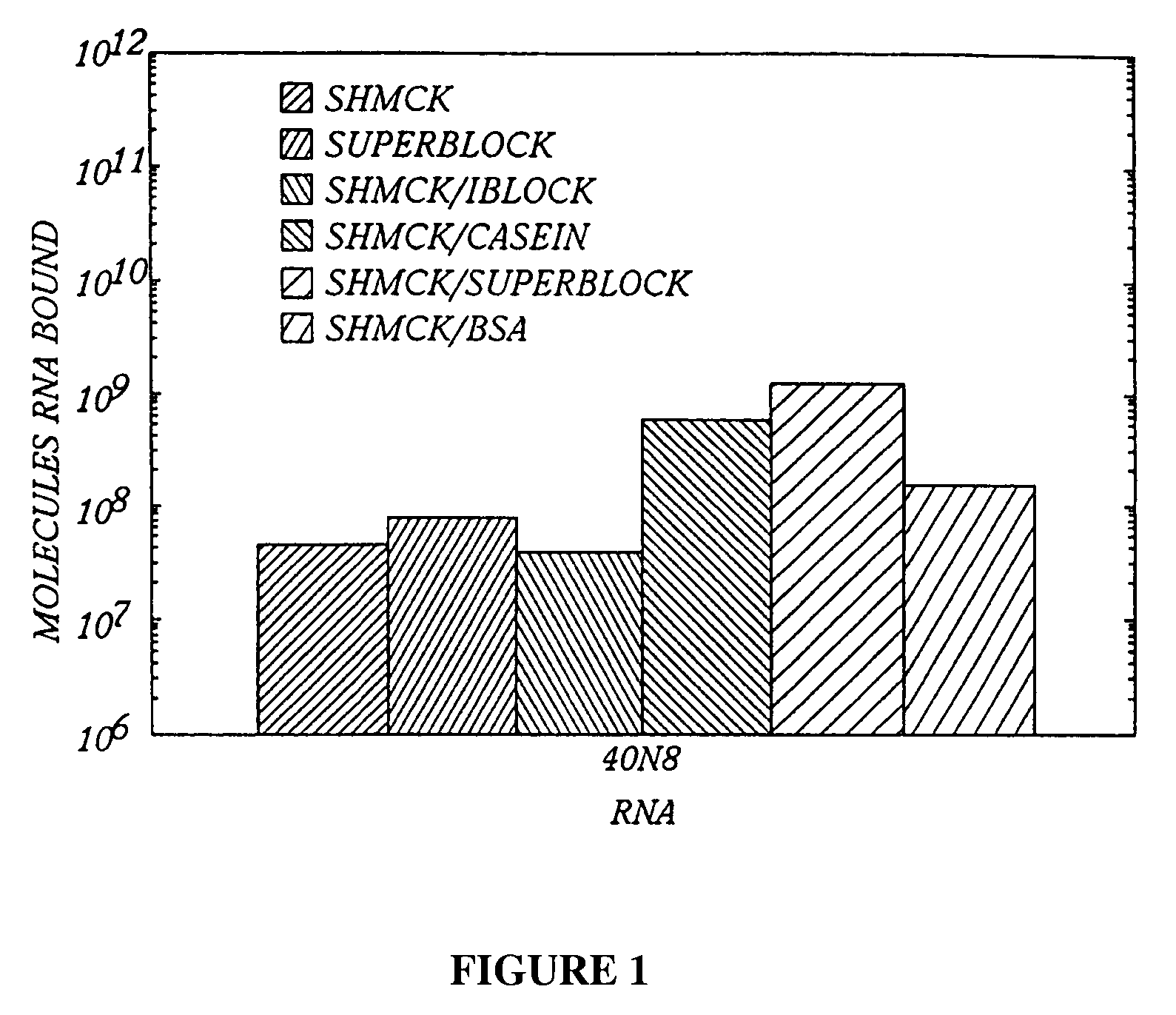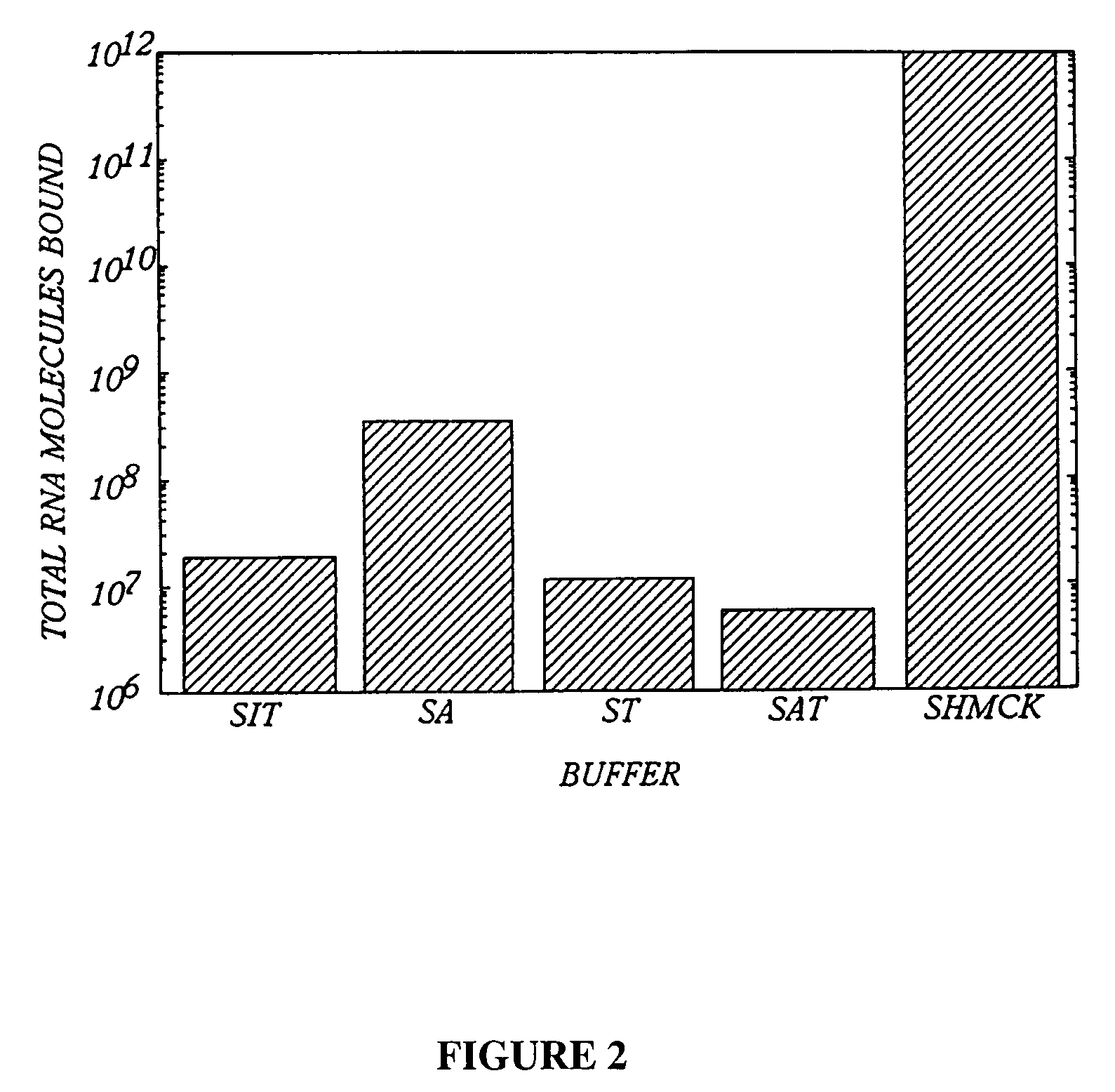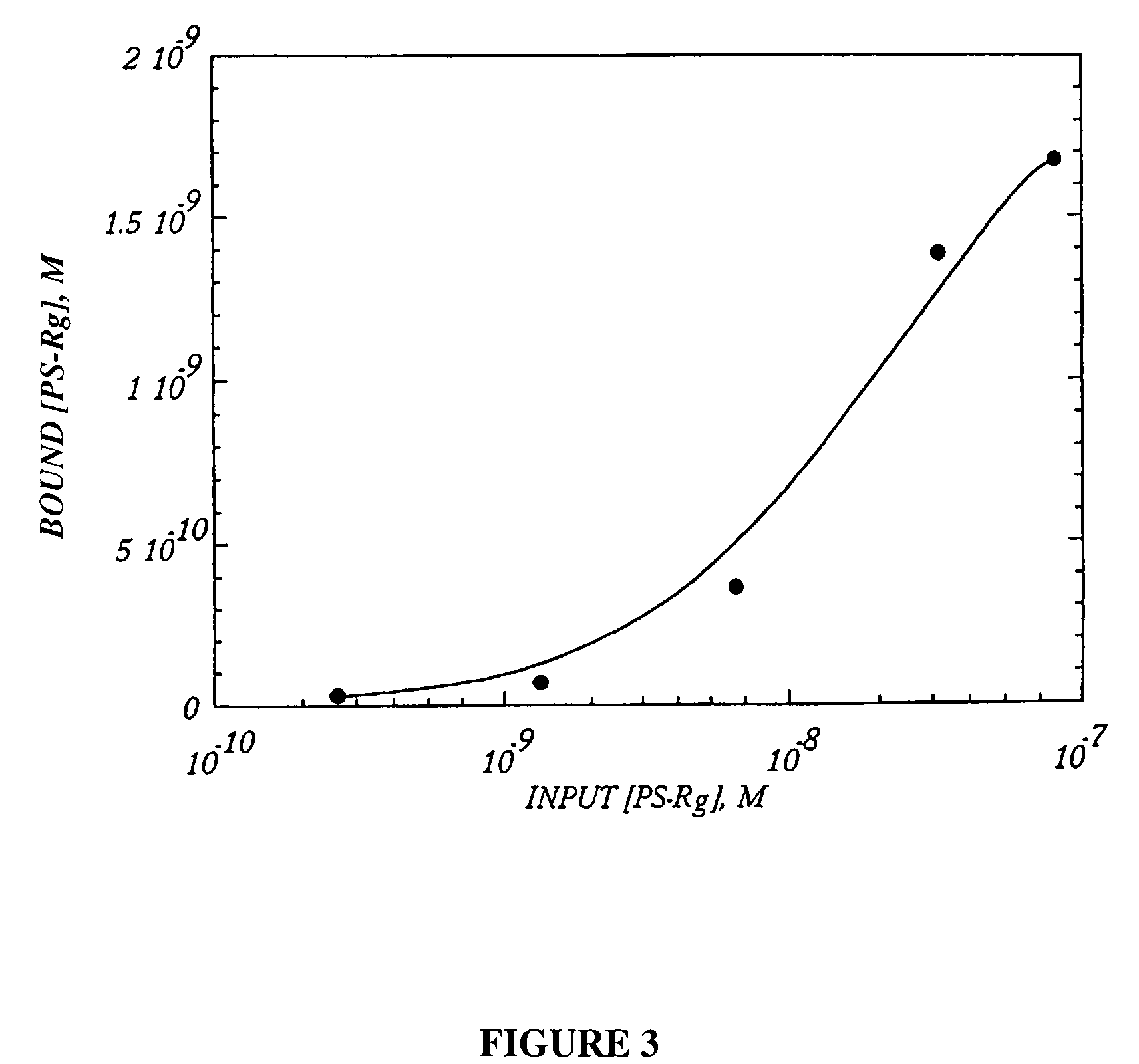Method and apparatus for the automated generation of nucleic acid ligands
a nucleic acid ligand and automated technology, applied in the field of nucleic acid ligand generation, can solve the problems of time-consuming and difficult automation of size-fractionation procedures, such as gel electrophoresis, and achieve the effects of reducing the frequency of intial mispriming events, reducing time-consuming and difficult automation, and reducing the formation of high molecular weight artifacts
- Summary
- Abstract
- Description
- Claims
- Application Information
AI Technical Summary
Benefits of technology
Problems solved by technology
Method used
Image
Examples
example 1
[0144]The basis of the robotic workstation is a Packard MULTIProbe 204DT™, a four probe pipetting station that utilizes disposable pipette tips to minimize nucleic acid contamination. The workspace contains a 37° C. constant temperature heat block used for equilibration of the binding reaction and in vitro transcription, a computer controlled thermal cycler for both RT and PCR reactions, a freezer unit for cold enzyme storage, various vessels for reagent storage, e.g., buffers, primers and mineral oil, and disposable pipette tip racks. The tip racks utilize the greatest area on the work surface and vary depending on the number of samples processed in parallel. All steps for in vitro selection take place either on the heat block or in the thermal cycler, liquids are transferred primarily between these two stations, although some enzyme buffers are premixed in an adjacent reagent block prior to transfer to the plate or thermal cycler.
[0145]In preferred embodiments, the entire process ...
example 2
[0173]The following example describes the performance of automated SELEX on the recombinant murine P-selectin / IgG fusion protein (PS-Rg). For a description of manual SELEX against selectin targets see Parma et al., U.S. Pat. No. 5,780,228, entitled, “High Affinity Nucleic Acid Ligands to Lectins,” incorporated herein by reference in its entirety.
[0174]Passive adsorption of IgG proteins to polystyrene surfaces through hydrophobic interactions has been successfully used in a variety of immunoassays. Enough IgG remains active under such immobilization to be useful as a capture reagent in ELISA tests. Some fraction of the adsorbed molecules maintain their active conformation in the antigen binding site, replaced here with P-selectin. Thus, it was determined that PS-Rg immobilized on Immulon 1 polystyrene plates could serve as a target for the automated SELEX process.
A. Plate Characterization
1. Test of Various Blocking Agents
To empty Immulon 1 wells, 150 μl of various buffers were incuba...
example 3
Quantitative PCR
[0200]The following primers (5P7-FD2 and 5P8-FD2) were designed wherein the underlined portions are complementary to the N7 and N8 templates.
[0201]
5P7-FD2SEQ ID NO:1 DABCYL | (CH2)6 A | GCTCTAATACGACTCACTATAGGGAGGACGATGCGG-3′ A |||| 5p7 CGAG-5 G | 6-FAM5P8-FD2SEQ ID NO:2 DABCYL | (CH2)6 A | GCTCTAATACGACTCACTATAGGGAGACAAGAATAAACGCTCAA-3′ A |||| 5P8 CGAG-5′ G | 6-FAM
[0202]The hairpin in each primer has a Tm of ˜85° C., and contains a fluorophore (6-FAM) on its 5′ terminus and a quencher (DABCYL) opposite the fluorophore on its stem. Upon illumination at 495 nm, excitation energy is transferred from 6-FAM to DABCYL by fluorescence resonance energy transfer. The efficiency of energy transfer is dependent on the sixth pow...
PUM
| Property | Measurement | Unit |
|---|---|---|
| Density | aaaaa | aaaaa |
| Density | aaaaa | aaaaa |
| Temperature | aaaaa | aaaaa |
Abstract
Description
Claims
Application Information
 Login to View More
Login to View More - R&D
- Intellectual Property
- Life Sciences
- Materials
- Tech Scout
- Unparalleled Data Quality
- Higher Quality Content
- 60% Fewer Hallucinations
Browse by: Latest US Patents, China's latest patents, Technical Efficacy Thesaurus, Application Domain, Technology Topic, Popular Technical Reports.
© 2025 PatSnap. All rights reserved.Legal|Privacy policy|Modern Slavery Act Transparency Statement|Sitemap|About US| Contact US: help@patsnap.com



